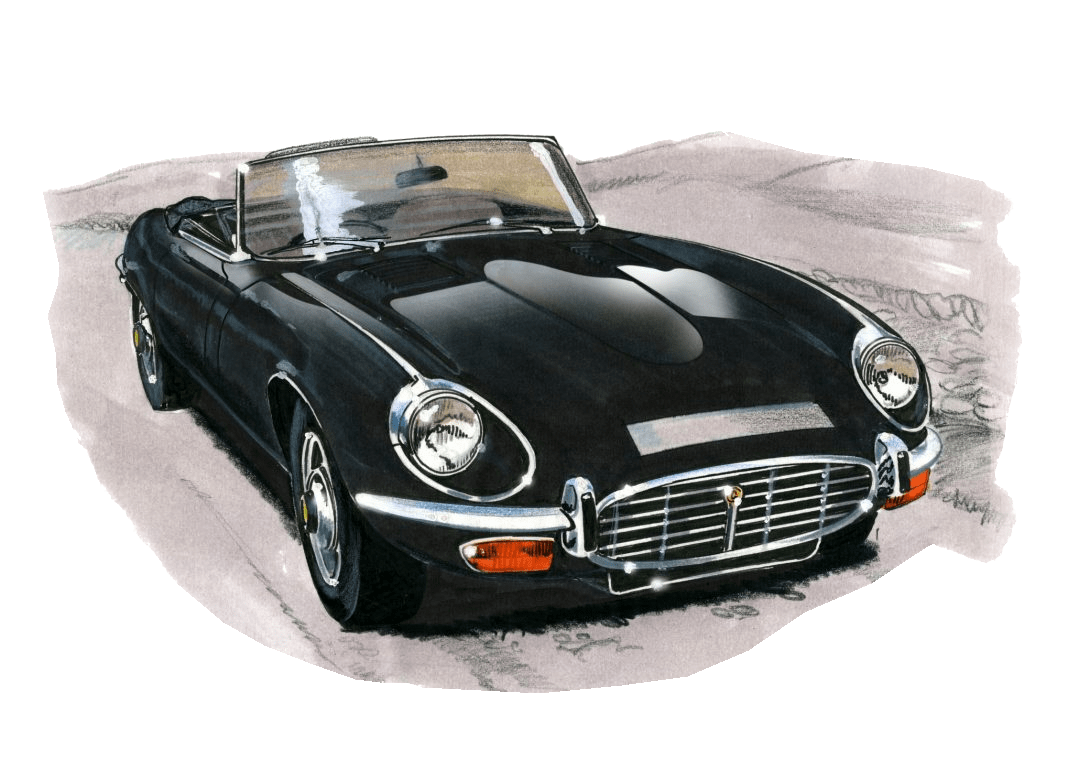
A renowned icon of the automobile industry, the Jaguar E-Type is an undeniable legend in its own right. With its sleek design and high-performance, the E-Type not only redefined people’s expectations of a sports car, but also captured the world’s imagination, becoming an intrinsic feature of 1960s pop culture. However, within the lineage of the E-Type model, there stands a variant that is distinct in various aspects – the Jaguar E-Type Series III.
Unveiled in 1971, the Series III marked a significant departure from its predecessors in design, performance, and comfort. While it faithfully followed the E-Type DNA, it showcased unique characteristics that set it apart from its precursor models – Series I and Series II.
Firstly, the most prominent difference between the Series III and the prior E-Type models is the power beneath the bonnet. The Series III is equipped with a new 5.3-litre V12 engine, replacing the earlier 6-cylinder powerhouses in previous models. This V12 engine, the first ever in Jaguar’s history, was designed to offer enhanced cruising capability, providing smoother power delivery and lower noise output. Consequently, the Series III has a top speed of approximately 150 mph, making it faster than its siblings.
Secondly, the changes are not confined to just the engine – the Series III also showcased substantial deviations in design elements. The longer wheelbase and wider track, juxtaposed against its siblings, accommodated for a more roomy interior, offering increased legroom and comfort, making it significantly more luxurious in feel. Additionally, flared wheel arches coupled with an aggressive looking front grille, a redesigned bonnet to accommodate the larger V12, and larger inlet ports contributed to an edgier and more aggressive visual stance, enabling it to occupy a unique position within the E-Type spectrum.
Furthermore, unlike its predecessors, where customers could choose between coupe and convertible versions, the Series III was majorly available in only the convertible format, or as a 2+2 coupe version. The two-seater coupe variant was discontinued, reinforcing the Series III’s focus on grand touring comfort over offering pure sports performance.
Technological advancement was also a distinguishing feature of the Series III. It was the first E-Type to come with power-assisted steering, which significantly improved the driving experience. In addition, the 5.3 L V12 engine was coupled with an improved cooling system due to the inclusion of twin electric fans, effectively mitigating the earlier models’ overheating issues.
Lastly, the Series III was also unique in its marking the end of an era. As the last model in the iconic E-Type range, it signaled the termination of the E-Type lineage, and the transition to subsequent models, like the XJ-S. Hence, it holds a sentimental note among the E-Type connoisseurs.
In conclusion, though the Jaguar E-Type Series III bears the prestigious E-Type name, it distinguishes itself significantly from its predecessors through its unique V12 engine, altered design aesthetics, enhanced luxury, and pioneering technological inclusions. While some purists may argue that it strayed from the ‘true’ E-Type essence, its unique set of features and capabilities firmly cements the Series III as an iconic model in its own right, bridging the gap between the classic E-Type sports cars and the modern grand tourers.